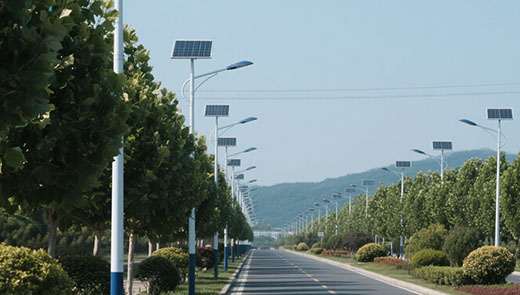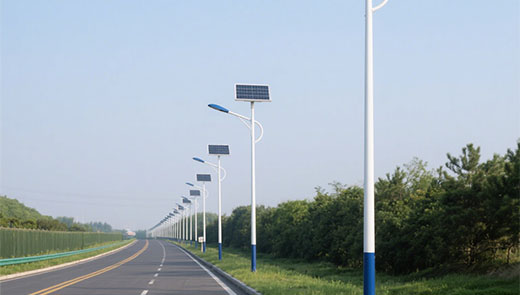Application of solar street lights on remote mountain roads
Dec 20, 2024
Due to the complex terrain and difficult grid coverage in remote mountainous areas, the installation and maintenance of traditional lighting facilities face many challenges. Solar street lights, with their independent power supply, environmental protection and energy saving, have become an ideal choice for solving the problem of road lighting in mountainous areas. This article discusses the specific application and advantages of solar street lights in remote mountainous roads.
Improve night driving vision Mountain roads are usually winding and tortuous, and there are high safety risks for night driving. Solar led street lights provide drivers with stable night lighting, enhance visibility, and reduce the incidence of traffic accidents.
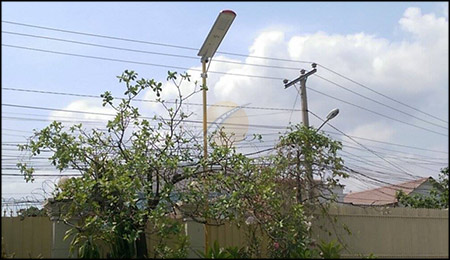
Marking dangerous sections In dangerous areas such as sharp bends, steep slopes or forks, solar street lights can be installed more frequently to clarify road boundaries and provide clear safety guidance for pedestrians and vehicles.
Reduce energy consumption Solar street lights rely on solar power generation and do not need to be connected to the grid, avoiding the dependence of traditional street lights on fossil fuel electricity and fully realizing the use of green energy.
Protect the ecological environment There is no need to dig cables to install solar street lights, which greatly reduces the damage to the original ecological environment in the mountainous area and meets the requirements of mountain ecological protection.
Reducing construction and maintenance costs Traditional lighting facilities in mountainous areas require long-distance cable laying, which is costly and difficult to maintain. Solar outdoor lights are independently powered and easy to install, greatly reducing construction and maintenance costs.
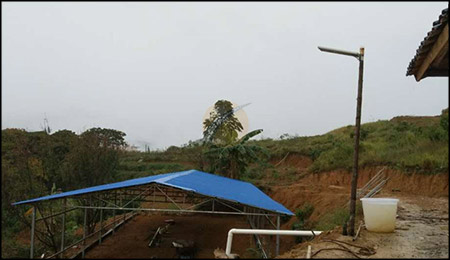
Adapt to a variety of terrain conditions Whether it is a steep mountain road, a forest trail or a waterside road, solar street lights can be flexibly installed without complex infrastructure.
Promote regional economic development By improving infrastructure conditions, solar road lights provide support for the introduction of tourism, logistics and other industries in mountainous areas, injecting vitality into local economic development.
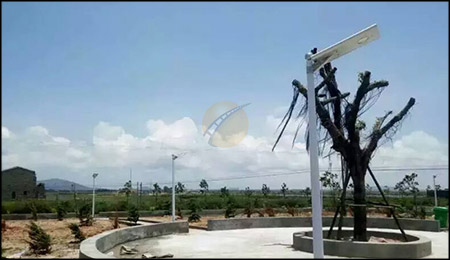
The application of new battery technology with high-efficiency energy storage technology can extend the working time of solar street lights and ensure stable power supply even in continuous rainy weather.
Modular design Modular components make maintenance more convenient, further reduce the cost of use, and improve the reliability of the system.
The application of solar street lights on remote mountain roads has not only effectively improved traffic safety and the quality of life of residents, but also played an important role in ecological protection and economic development. With the continuous advancement of technology, solar street lights will play a more important role in mountain road construction and provide support for green and sustainable development.
Improve traffic safety
Improve night driving vision Mountain roads are usually winding and tortuous, and there are high safety risks for night driving. Solar led street lights provide drivers with stable night lighting, enhance visibility, and reduce the incidence of traffic accidents.

Marking dangerous sections In dangerous areas such as sharp bends, steep slopes or forks, solar street lights can be installed more frequently to clarify road boundaries and provide clear safety guidance for pedestrians and vehicles.
Environmental protection and energy saving
Reduce energy consumption Solar street lights rely on solar power generation and do not need to be connected to the grid, avoiding the dependence of traditional street lights on fossil fuel electricity and fully realizing the use of green energy.Protect the ecological environment There is no need to dig cables to install solar street lights, which greatly reduces the damage to the original ecological environment in the mountainous area and meets the requirements of mountain ecological protection.
Economic and convenient
Reducing construction and maintenance costs Traditional lighting facilities in mountainous areas require long-distance cable laying, which is costly and difficult to maintain. Solar outdoor lights are independently powered and easy to install, greatly reducing construction and maintenance costs.
Adapt to a variety of terrain conditions Whether it is a steep mountain road, a forest trail or a waterside road, solar street lights can be flexibly installed without complex infrastructure.
Improve the quality of life of mountain residents
Convenient daily travel The improvement of nighttime lighting not only ensures the travel safety of residents and tourists, but also provides possibilities for nighttime activities in mountainous areas.Promote regional economic development By improving infrastructure conditions, solar road lights provide support for the introduction of tourism, logistics and other industries in mountainous areas, injecting vitality into local economic development.
Technological innovation and future development
Intelligent management combined with sensors and Internet of Things technology, solar street lights can achieve remote monitoring and automatic brightness adjustment, improve operating efficiency and reduce failure rate.
The application of new battery technology with high-efficiency energy storage technology can extend the working time of solar street lights and ensure stable power supply even in continuous rainy weather.
Modular design Modular components make maintenance more convenient, further reduce the cost of use, and improve the reliability of the system.
The application of solar street lights on remote mountain roads has not only effectively improved traffic safety and the quality of life of residents, but also played an important role in ecological protection and economic development. With the continuous advancement of technology, solar street lights will play a more important role in mountain road construction and provide support for green and sustainable development.

